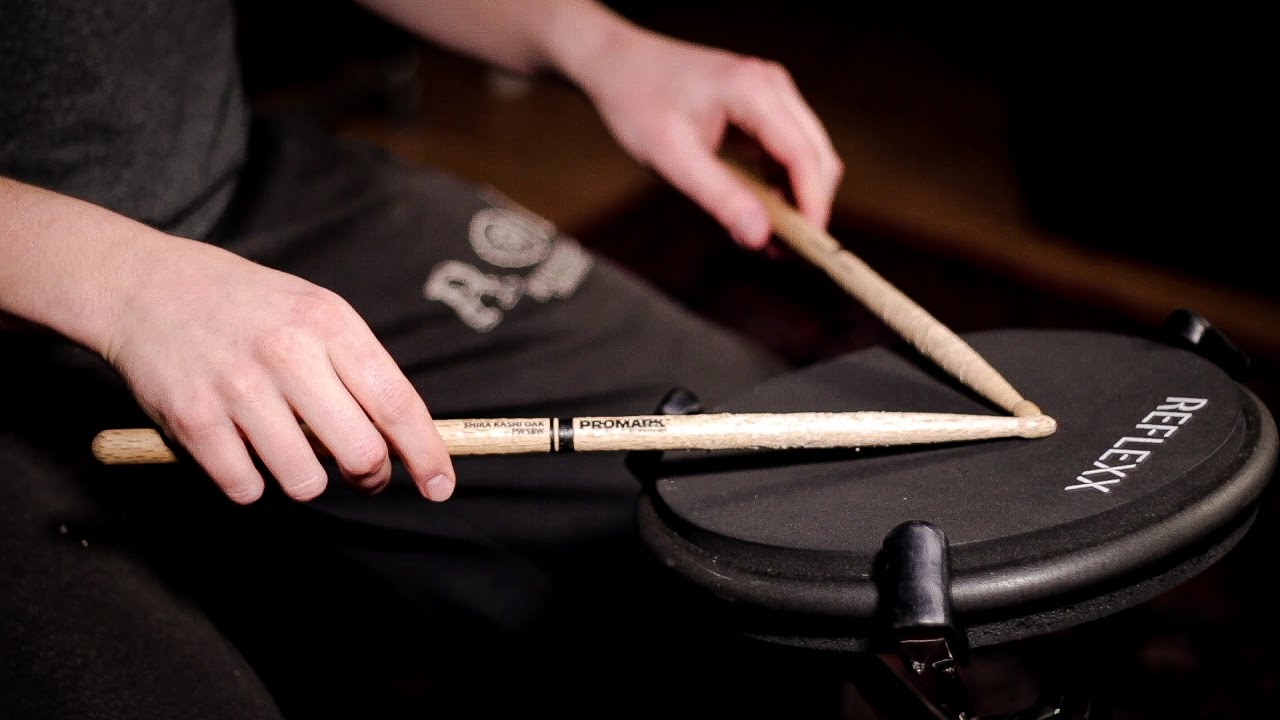Drum practice is something drummers have to do if they want to improve their skills, develop new techniques, and become better at the drums. However, many beginners place too much pressure on themselves, which leads to frustration. That is why you must start slowly and learn drumming basics first, like practicing rudiments, then transition into more advanced topics like reading drum music notation.
It is also vital that you have some drums practice exercises which are not so difficult but still adequate for gaining new skills or perfecting the old ones. Drummers usually start with single strokes, progress to double strokes, and eventually incorporate triplets, paradiddles, and other rudiments into their repertoire.
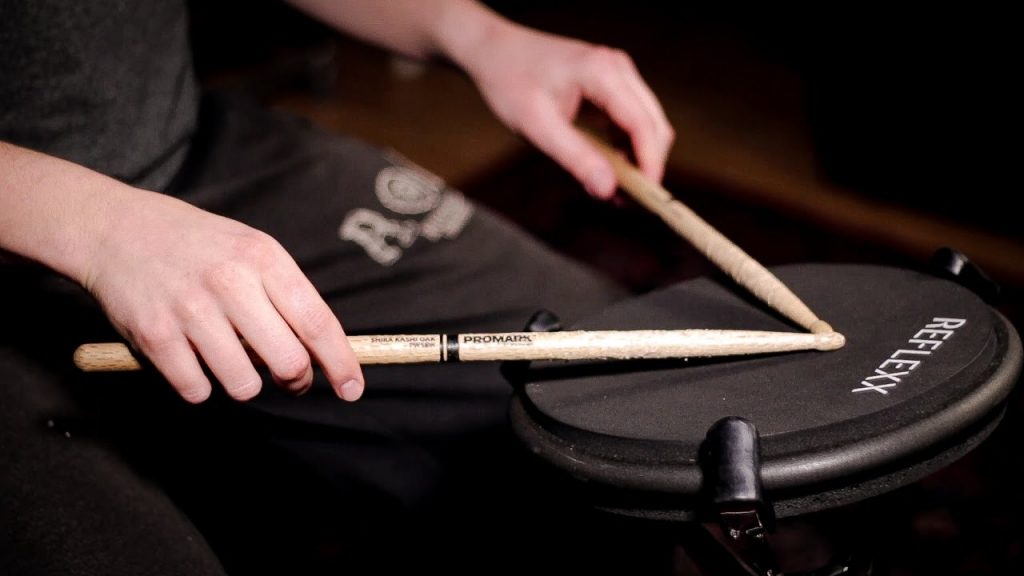
If you learn these basic drumming patterns early on, you will have an easier time mastering more advanced techniques later on. Practicing drums like the snare drum, hi-hat, and cymbals are essential to becoming a great drummer. You can practice them at home or in a studio with your favorite music.
Drum Warm-Up Exercises
There are several warm-up exercises you should perform before playing any drum set. The most important thing is to stretch out your arms and legs, as well as your fingers and wrists. This way, you’ll be able to play comfortably without hurting yourself. Another good exercise is to shake your whole body from head to toe gently. It helps loosen up all the muscles in your body, making it easier to move around while playing.
The following warm-up exercises are suitable for both beginner and intermediate drummers; they are easy enough to master yet challenging enough to keep you motivated.
- Hand Clapping
- Finger Plucking
- Leg Swinging
- Shoulder Shaking
- Hip Bending
- Neck Twisting
- Wrist Flicking
Practice songs will help you get used to the feel of the drums. When you are comfortable with the sound of the drums, it will be easier to play along with the beat. Playing along with the song will also allow you to hear how the different parts fit together.
You do not need to know every drum part by heart when learning how to play the drums. Instead, focus on the rhythm section and listen carefully to what the bassist and guitarist are doing. As you get more familiar with the song, you’ll be able to improve your ability to read music notation and understand the song’s structure.
To practice drumming, you need to learn the double stroke roll pattern. It is one of the easiest ways to read drum notation. When learning how to read drum notation, it’s best to practice using real sheet music. Reading drum notation isn’t just about memorizing the notes; it’s also about understanding the rhythms and interpreting them.
Drum Exercises For Speed
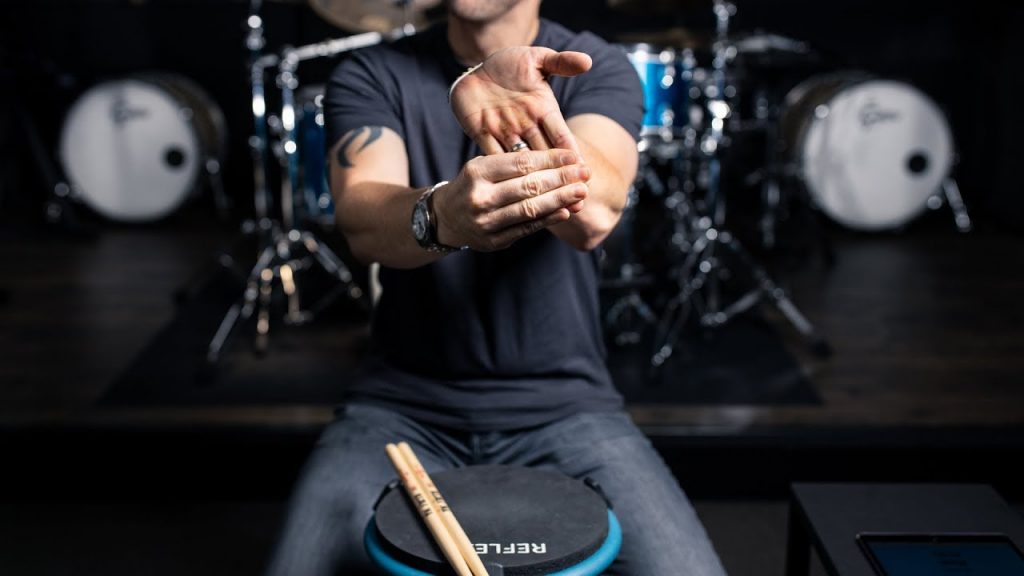
If you want to speed up your drumming, try playing fast drum beats instead of slow ones. Start with simple patterns, such as quarter notes, eighth notes, sixteenth notes, etc., until you reach the desired tempo. Once you’ve mastered the timing, you can add triplets, syncopated accents, and even complex polyrhythms to your repertoire.
When playing faster, make sure you use your hands and feet efficiently. Maintain proper posture and balance while playing. Remember to breathe deeply and relax your shoulders.
When practicing drum exercises, it’s always better to do them slowly first before working on them at full speed. You will gain confidence and become a better player by gradually increasing the tempo.
The drum rudiments are another way to increase your skill level quickly. These include ride, crash, rim shot, tom fill, backbeat, and open/close. Learning these rudiments will allow you to create many different drum arrangements.
You may find that specific techniques work better than others. Try switching between them to see which works best for you. You may discover that some techniques are more accessible for you to execute than others.
Drum Exercises Independence and Control
The practicing technique described above is excellent for beginners who have little experience playing the drums. However, if you already have some experience playing the drums, you might want to try something else.
Independence is being able to play without relying on other instruments or musicians. It takes time to develop this type of independence. If you’re not getting any feedback from your drummer, you probably are not developing this skill. Independence approach will help you develop your unique drumming voice.
Control refers to the ability to control your performance. It involves having the confidence to take risks to achieve musical goals. The more confident you are, the less likely you will freeze up during performances. In this case, you will be trying to perfect your skills to perform well under pressure. If you’re having trouble controlling your drumsticks, then you should consider getting a drum stick grip trainer.
To improve your independence and control, you could try using a metronome. A metronome helps you keep time and provides feedback on whether or not you’re hitting the right notes. It also allows you to practice in a controlled environment.
Effective practice requires concentration and focus. To get the most out of your practice sessions, you need to set aside enough practice time to devote to your craft. The more time you spend practicing, the better you’ll become. You should also maintain a practice log so you can track your progress. When you complete a session, take note of what worked well and what didn’t.
Gaining independence and control over your drumming is an essential step toward becoming a proficient drummer. With concentration, you can learn a single stroke roll, a basic pattern, a double stroke rolls, and a triplet roll, all within one hour.
Drum Practice Technique and Timing
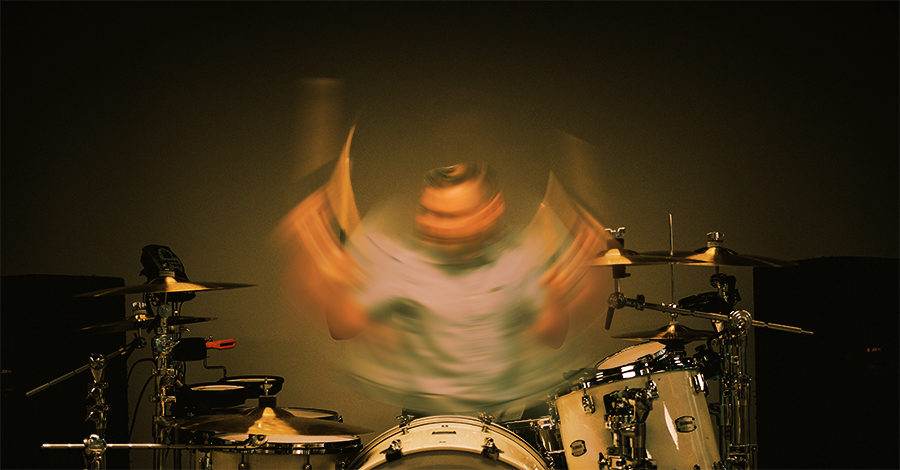
Alternating playing and stopping is another effective practice method. After you have mastered a particular part of your drumming routine, stop playing for several seconds before starting again. It forces you to reevaluate your performance. By alternating between playing and pausing, you will find yourself focusing on different aspects of your technique.
You should consider incorporating some form of visual feedback into your practice routine. For example, you could use a mirror to check how your drumstick is positioned or use a video camera to monitor your footwork.
You could also use a timer to help you gauge your progress. Once you feel how long it takes you to play a particular passage, you can use a timer to determine when you’ve practiced long enough. If you’re struggling to master a difficult passage, you might want to break down the piece into smaller parts. Then, you can work on mastering each segment.
Drum Set Exercises for Beginners
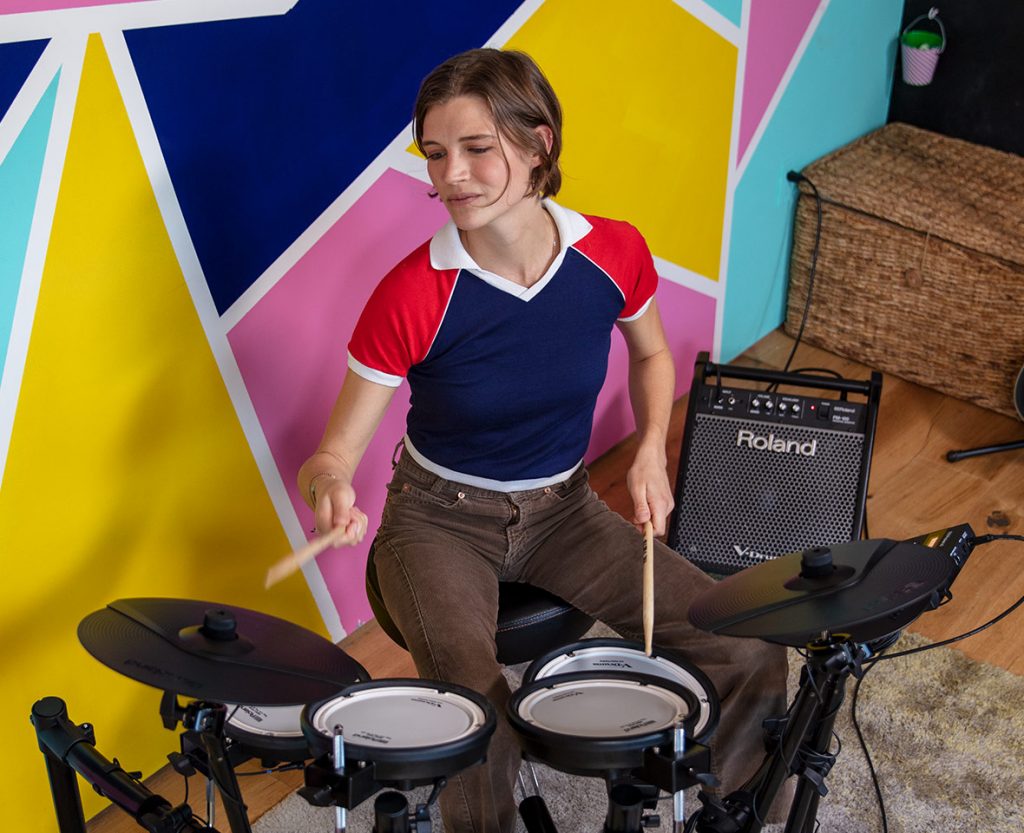
Practicing with a metronome is a great way to ensure you are keeping good timing. Metronomes provide a steady beat that keeps you focused on the music. They also give you a reference point to measure against.
It is important to start slow and gradually speed up until you reach the desired tempo. It ensures that you don’t accidentally hit the wrong notes while increasing the tempo. As you gain proficiency, you’ll be able to adjust your tempo as needed.
Moreover, it is essential to practice at a consistent pace. For example, if you’re practicing a four-count figure, make sure to count off each beat consistently. Do not skip beats or add extra counts. Also, avoid rushing through sections of your practice routine. Instead, concentrate on performing each section slowly and precisely.
If you are looking for drum exercises for beginners that don’t require a lot of equipment, you should consider working with a drum pad. The practice pad is usually made of rubber or plastic. Some have grooves cut into them. They come in various sizes and shapes, but they all serve the same purpose.
Practicing with a drum pad allows you to develop your technique without worrying about damaging your drums. Additionally, you won’t have to worry about accidentally dropping your sticks.
To get started, you need a pair of drumsticks. You can purchase these at most hardware stores. While it is possible to play drums using your hands only, it’s easier to make things more efficient by using drumsticks.
The drum kit is the heart of any band. Without a good sound system, there is no way to hear your music correctly. However, if you are new to the world of drum kits, you might be wondering where to start. Fortunately, there are many options available today.
The first thing you should do is choose a comfortable position. Do not sit too close to the edge of your drum kit. Instead, place your feet flat on the floor. It will give you greater stability.
Next, pick up your drumsticks. Hold them horizontally across your body. Make sure that both ends of the stick touch your palms. Keep your arms straight as you hold the sticks. Now that you know which direction your drumsticks should face, you can begin to practice.
Drummers often use two types of drum sets: acoustic and electronic. Professional musicians typically use acoustic drum sets, while electronic drum sets are designed for home use. Both drum kits include at least one bass drum, snare drum, hi-hat cymbal, and tom tom.
Best Tips for Effective Drum Practice Routine
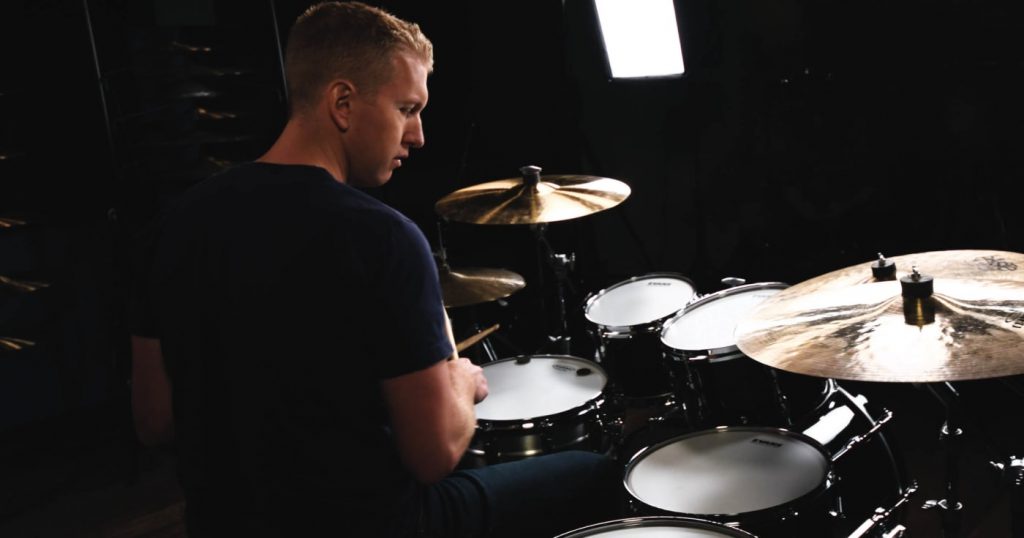
First, should focus on developing your timing. Learn how to count beats to accomplish this goal. Start slowly. Count out loud as you play. As you become more familiar with the rhythm, you can gradually increase the speed you count.
Also, pay attention to your posture while playing. Your hips should always remain level. Try not to lean forward or backward. If you see yourself leaning either way, try adjusting your stance.
Another critical aspect of practicing is maintaining a positive attitude. It’s easy to lose motivation after a few days. But if you keep your mind focused on what you are doing, you will enjoy practicing more than ever before.
Moreover, you need to follow the 80/20 rule when practicing. For example, spend 20 percent of your time practicing each day. That means you should dedicate approximately four hours per week to practicing. 80% of your success depends on 20% of your efforts.
Mixing up your time is another tip for effective drum practice. Play different songs during different times of the day. It will help you avoid getting bored.
Have fun while practicing. It is easy to get stressed out when trying to improve your skills. Play what you love and have fun. If you don’t like a particular song, change it up.
If you are looking for some inspiration, check out YouTube videos. Many people post their drum lessons online. Some of these tutorials are free while others require payment. You can also search for drum lessons in specific genres such as rock or jazz.
If you are interested in learning more about drumming, you may want to consider enrolling in an online class.
Most Asked Questions
Q. How many hours a day should I practice drums?
A. The answer to this question depends largely upon your goals. If you want to develop essential skills, you might be able to achieve those goals within thirty minutes every day. However, if you are going to master your craft, you will probably need to devote an hour each day to practice. In any case, you should never overdo it. Do not feel obligated to practice all day long. Instead, make sure that you stick to that schedule. If you start feeling tired, take a break. Finally, remember that there is no single right way to practice. The key is finding a routine that works best for you.
Q. How much time should I invest in practicing drums?
A. Drummers often ask themselves this question. After all, they know that they must practice their instruments daily. Yet, they struggle to determine exactly how much time they should invest in practice. So, the answer to this question is: “as much as necessary.”
However, with dedication and hard work, 10-12 months of daily practice will lead you to the point where you can play almost anything with ease. For more proficiency, 18 months-2 years of daily practice is recommended. Several other factors influence how much time you should spend practicing. In addition to the amount of time you commit to practicing, there are other considerations.
Conclusion
Practicing drums requires patience, discipline, and persistence. But once you’ve mastered the basics, you will find that playing drums becomes second nature. If you enjoy music, drumming helps you become a better musician.
You could try using a metronome for extra motivation. Or perhaps you may prefer to use headphones to listen to your favorite tunes. Either way, the important thing is that you do something to keep yourself motivated.
To start, you should buy a pair of drumsticks. Then, you will want to learn how to hold them properly. Next, you need to figure out which grip is most comfortable for you, then follow it up with practice until you are ready to perform.



